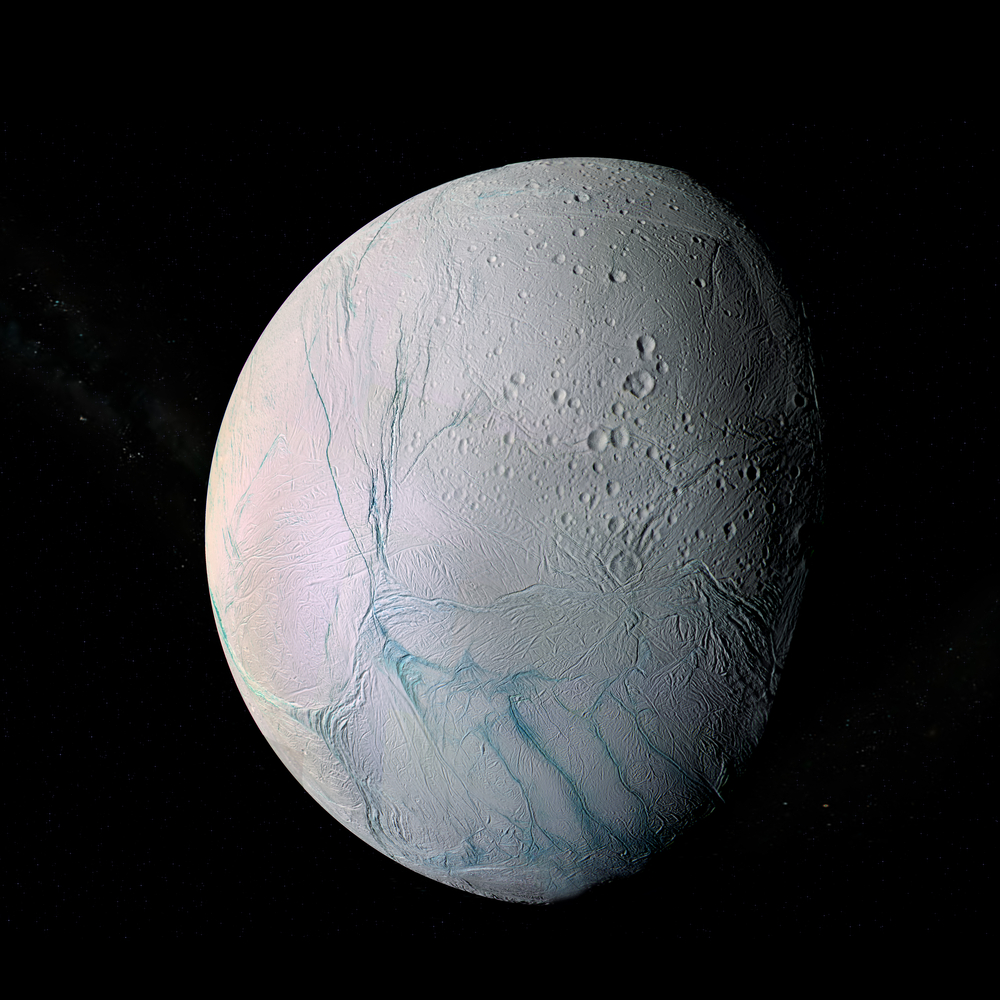

Saturn has 82 moons.Ĭooling can cause the liquid water beneath the moon’s ice shell to freeze and expand, causing the ice shell to crack.Įnceladus is already a cold place in our solar system with an average surface temperature of negative 328 degrees Fahrenheit. The tiny moon has an eccentric orbit that brings it closer than usual to Saturn at times but also pushes it out further from Saturn than the other moons as well. Enceladus feels those forces especially at its poles, stretching the icy shell thin. Organic compounds have been found on Saturn's moon EnceladusĮnceladus is Saturn’s sixth largest moon and its tides are at the mercy of the gas giant’s gravity.

New ocean world discoveries from Cassini and Hubble will help inform future exploration and the broader search for life beyond Earth. This illustration shows Cassini diving through the Enceladus plume in 2015. “We want to know why the eruptions are located at the south pole as opposed to some other place on Enceladus, how these eruptions can be sustained over long periods of time and finally why these eruptions are emanating from regularly spaced cracks,” said Max Rudolph, study author and assistant professor of earth and planetary sciences at the University of California, Davis. Researchers wanted to understand the activity they were observing and used numerical modeling in an attempt explain the stripes and plume activity. No other icy planets or moons have anything quite like them.” What makes them especially interesting is that they are continually erupting with water ice, even as we speak. “They are parallel and evenly spaced, about 130 kilometers long and 35 kilometers apart. “First seen by the Cassini mission to Saturn, these stripes are like nothing else known in our solar system,” said Doug Hemingway, study author at the Carnegie Institution for Science. The cracks are named for cities referenced in the folk tale “One Thousand and One Nights.” The stripes are large cracks that allow jets of water to shoot up through the icy shell, creating plumes that have intrigued scientists since the Cassini mission flew through them in 2015.Ī new study analyzing the tiger stripes published Monday in the journal Nature Astronomy. Scientists believe the icy water world could be another potential spot for life in our solar system.Īnd along the south pole, four “tiger stripes” can be seen. The tiny moon, only about 300 miles across, contains a rocky core and global subsurface ocean beneath an icy shell. Sustain, long-lived eruptions.Saturn’s moon Enceladus is an intriguing oddity. Our model shows how open connections to an ocean can be reconciled with, and The delay associated withįlushing and refilling of \emph spacecraft. The total power output of the tiger stripe terrain, while suggesting that theĮruptions are maintained over geological timescales. The persistence of the eruptions through the tidal cycle, the phase lag, and Here we show that a model of the tiger stripesĪs tidally-flexed slots that puncture the ice shell can simultaneously explain Peak plume flux lags peak tidal extension by $\sim$1 Tidally modulated) fissure eruptions throughout each orbit, and since the 2005ĭiscovery of the plumes.
Enceladus tiger stripes tidal heating pdf#
Kite and 1 other authors Download PDF Abstract: Spacecraft observations suggest that the plumes of Saturn's moon Enceladusĭraw water from a subsurface ocean, but the sustainability of conduits linking

Download a PDF of the paper titled Sustained eruptions on Enceladus explained by turbulent dissipation in tiger stripes, by Edwin S.


 0 kommentar(er)
0 kommentar(er)
